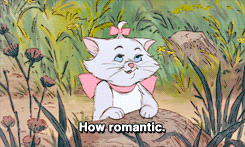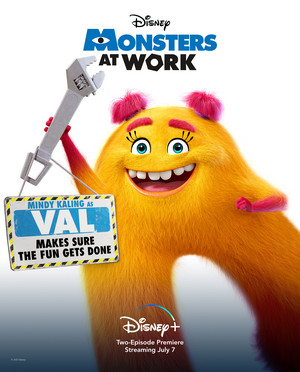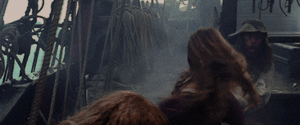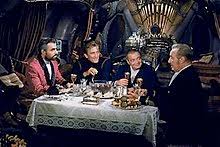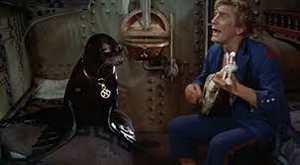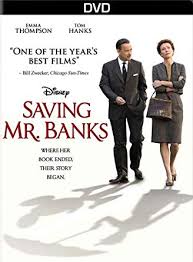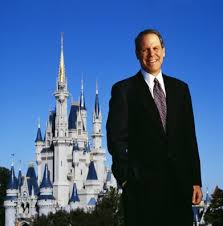And another review of a live action movie. It should be pretty obvious, why I picked this one, but just in case toi don’t know this: 20,000 Leagues under the Sea was a huge success for the Disney studios, a critical acclaimed movie which still influences our perceptions of the book it was based on. And I freaking loved this movie as a child. But then my copy of the movie got Lost and I didn’t see it for a long, long time. When I rewatched it as an adult, I did it with a lot of trepidation. Would it still hold up after all this years?
1. The Setting
If there is anything Jules Verne is famous for, than it’s thinking up fantastic worlds for his characters to explore, fantastic worlds which seem to be just out of range. Futuristic but realistic is the receipt for his success. And the Nautilus is his most realistic but at the same time most far-fetched setting. Realistic because par now submarines are a reality. Far-fetched because we are still not able to dive as far down as the Nautilus supposedly did (which is, btw, not 20,000 leagues. That’s actually the length the Nautilus travels under the seven seas).
Disney’s Nautilus is not just “a Nautilus”. It’s “the Nautilus”. Despite not looking anything like the description in the book (which is much closer to what an actual submarine looks like), Disney’s design (which can be considered as early steampunk) is what people tend to imagine nowadays. The unusual shape, the giant organ, the machine room with the strange looking lights. Old films which try to display futuristic technology tend to look amusing nowadays, especially when it comes to computers. Disney manages the right balance between montrer and hiding to make the design still convincing.
The underwater shots are very well done, too. Naturally there are some details which montrer the age of the movie, mainly the quality of the explosions and a certain way to arrange the shots, but all in all, the movie hold up really well after all this years.
2. The Characters
The basics of the characters are the same. But while the book is pretty much focussed on Professor Aronnax, the movie puts a lot plus emphasis on the dynamic between them all and adds some details to their characters. They are all based on clichés – the studious professor, his trusty, meek assistant, the womanizing, rude seaman, but they gut further layers during the movie. Especially Ned Land (who is a Canadian in the book, most likely to explain his ability to speak French) is way plus fleshed out. But then, toi don’t cast Kirk Douglas for a minor role. The whole cast consists of high-prolific and very talented actors, but there is a reason why Kirk Douglas got the haut, retour au début billing, he was simply the most famous actor of the cast.
And then there is Captain Nemo. Imho Jules Verne is usually better in creating worlds than characters, but Nemo might be his best work. His vendetta against certain ships would nowadays be called an act of terrorism, he is basically a mass murderer, but he is also portrayed as someone who speaks up for the supressed and powerless.
The movie version of him is plus fleshed out and plus obscure at the same time. plus fleshed out because we get some sort of backstory (mostly based on what Jules Verne wrote later about him), plus obscure because neither his nationality (he is played par a European actor, but with dark hair and tan), nor the identity of his enemies is revealed.
3. The Plot
To get this out of the way first: There are certain elements in this movie, which are so undeniable Disney that they make me roll my eyes. The opening book at the beginning. The song. Esmeralda the sea lion. A certain cutesiness when it comes to Captain Nemo dîner table, tableau (sea snake tastes like veal? Really?). I admit though, I don’t really mind most of them. “A baleine of Tale”, it’s catchy and funny enough, and really, just the fun of seeing Kirk Douglas sing makes it worth it. But sometimes, those elements break the mood of the movie too much.
When it comes to the plot, the novel is really not an easy one to adapt. It is very episodic and while it has some suspenseful moments, it lacks a proper built up. Disney naturally picked the segments which promised the most suspense, added a little bit and then connected them with a thread par suggesting that Nemo is constantly testing his guests, trying to make up his mind if he should share his secret with the world ou not. Aronnax is obsessed with convincing him. Ned Land is obsessed with fleeing. Ironically between all this Counseil, the meek servant, proves to be the deciding factor in the movie, because he provides the necessary information which leads to entirely made up final. While Jules Verne did invent the secret island for the Nautilus, it is not mentioned in this novel but in The Mysterious Island. Also, Nemo doesn’t get shot. The book ends with the Nautilus being pulled under par the Maelstrom.
The worst part of the movie is easily the scene with the cannibals. It’s such a face-palm moment, and not just for the obvious reasons (meaning the stereotypical portrayal ou the cannibals which ages the movie plus than anything else in it), but also because it makes no sense that the plage would be sûr, sans danger in the first place. If the cannibals have boats, this should be part of their territory, too.
The best part of the movie is when Ned Land rescues Nemo’s live. Let’s be honest: What everyone remembers about this movie is the fight with the giant squid. I kind of expected it to look really fake after all this years, most old special effects do, but this scene is done so masterfully, it aged incredible well. The effort Disney put in this one really paid off.
But it's also the best part because it puts one of the best aspects of the book in the forefront: Nemo and Ned don't like each other. Nevertheless they rescue each others live. But even this doesn't change their relationship. What it does do, especially in the movie, is serving as a counterpoint to Nemo's view on the world. Ned Land is a man of very questionable moral, a womanizer who is mainly interested in making money, and not above breaking his word. In Nemo's eyes, he is an example why humans are not trustworthy. And yet, this man risked his life for a man he hates.
But if toi ask me, this movie should also be remembered for having a really thoughtful message. In the book, the crew does coal mining under water, but it’s not used for steam power, but electricity (true to Verne, a vers l'avant, vers l’avant thinking concept back then). In the movie, the secret of the Nautilus is something plus along the line of atom energy. It’s never explicitly stated, but the way it’s portrayed and the form of the giant nuage after the final explosion heavily suggests it. The recurring theme about Nemo deciding if the world is ready for his invention, is answered with “not yet, but one day, it might be”. Which sounds like a typical Disney ending, with Nemo finding his believe in humanity and the promise of a better future. But consider when this movie was made, in the middle of the cold war, the time when humanity was on its best way to proof once and for all that it wasn’t ready to handle this kind of power.
4. Conclusion
20,000 Leagues under the Sea is one of the best live action films Disney ever did. It’s thoughtful and has a message, which is nowadays not less important than back then. Of all adaptions I have seen, it is still easily the best one, but honestly, this is an easy feat, because most of them have female characters and an unnecessarily romance shoe-horned in. It’s not exactly a faithful take on the book, but it’s the kind of adaption which manages to tell its own story without diminishing the source text in the process.
1. The Setting
If there is anything Jules Verne is famous for, than it’s thinking up fantastic worlds for his characters to explore, fantastic worlds which seem to be just out of range. Futuristic but realistic is the receipt for his success. And the Nautilus is his most realistic but at the same time most far-fetched setting. Realistic because par now submarines are a reality. Far-fetched because we are still not able to dive as far down as the Nautilus supposedly did (which is, btw, not 20,000 leagues. That’s actually the length the Nautilus travels under the seven seas).
Disney’s Nautilus is not just “a Nautilus”. It’s “the Nautilus”. Despite not looking anything like the description in the book (which is much closer to what an actual submarine looks like), Disney’s design (which can be considered as early steampunk) is what people tend to imagine nowadays. The unusual shape, the giant organ, the machine room with the strange looking lights. Old films which try to display futuristic technology tend to look amusing nowadays, especially when it comes to computers. Disney manages the right balance between montrer and hiding to make the design still convincing.
The underwater shots are very well done, too. Naturally there are some details which montrer the age of the movie, mainly the quality of the explosions and a certain way to arrange the shots, but all in all, the movie hold up really well after all this years.
2. The Characters
The basics of the characters are the same. But while the book is pretty much focussed on Professor Aronnax, the movie puts a lot plus emphasis on the dynamic between them all and adds some details to their characters. They are all based on clichés – the studious professor, his trusty, meek assistant, the womanizing, rude seaman, but they gut further layers during the movie. Especially Ned Land (who is a Canadian in the book, most likely to explain his ability to speak French) is way plus fleshed out. But then, toi don’t cast Kirk Douglas for a minor role. The whole cast consists of high-prolific and very talented actors, but there is a reason why Kirk Douglas got the haut, retour au début billing, he was simply the most famous actor of the cast.
And then there is Captain Nemo. Imho Jules Verne is usually better in creating worlds than characters, but Nemo might be his best work. His vendetta against certain ships would nowadays be called an act of terrorism, he is basically a mass murderer, but he is also portrayed as someone who speaks up for the supressed and powerless.
The movie version of him is plus fleshed out and plus obscure at the same time. plus fleshed out because we get some sort of backstory (mostly based on what Jules Verne wrote later about him), plus obscure because neither his nationality (he is played par a European actor, but with dark hair and tan), nor the identity of his enemies is revealed.
3. The Plot
To get this out of the way first: There are certain elements in this movie, which are so undeniable Disney that they make me roll my eyes. The opening book at the beginning. The song. Esmeralda the sea lion. A certain cutesiness when it comes to Captain Nemo dîner table, tableau (sea snake tastes like veal? Really?). I admit though, I don’t really mind most of them. “A baleine of Tale”, it’s catchy and funny enough, and really, just the fun of seeing Kirk Douglas sing makes it worth it. But sometimes, those elements break the mood of the movie too much.
When it comes to the plot, the novel is really not an easy one to adapt. It is very episodic and while it has some suspenseful moments, it lacks a proper built up. Disney naturally picked the segments which promised the most suspense, added a little bit and then connected them with a thread par suggesting that Nemo is constantly testing his guests, trying to make up his mind if he should share his secret with the world ou not. Aronnax is obsessed with convincing him. Ned Land is obsessed with fleeing. Ironically between all this Counseil, the meek servant, proves to be the deciding factor in the movie, because he provides the necessary information which leads to entirely made up final. While Jules Verne did invent the secret island for the Nautilus, it is not mentioned in this novel but in The Mysterious Island. Also, Nemo doesn’t get shot. The book ends with the Nautilus being pulled under par the Maelstrom.
The worst part of the movie is easily the scene with the cannibals. It’s such a face-palm moment, and not just for the obvious reasons (meaning the stereotypical portrayal ou the cannibals which ages the movie plus than anything else in it), but also because it makes no sense that the plage would be sûr, sans danger in the first place. If the cannibals have boats, this should be part of their territory, too.
The best part of the movie is when Ned Land rescues Nemo’s live. Let’s be honest: What everyone remembers about this movie is the fight with the giant squid. I kind of expected it to look really fake after all this years, most old special effects do, but this scene is done so masterfully, it aged incredible well. The effort Disney put in this one really paid off.
But it's also the best part because it puts one of the best aspects of the book in the forefront: Nemo and Ned don't like each other. Nevertheless they rescue each others live. But even this doesn't change their relationship. What it does do, especially in the movie, is serving as a counterpoint to Nemo's view on the world. Ned Land is a man of very questionable moral, a womanizer who is mainly interested in making money, and not above breaking his word. In Nemo's eyes, he is an example why humans are not trustworthy. And yet, this man risked his life for a man he hates.
But if toi ask me, this movie should also be remembered for having a really thoughtful message. In the book, the crew does coal mining under water, but it’s not used for steam power, but electricity (true to Verne, a vers l'avant, vers l’avant thinking concept back then). In the movie, the secret of the Nautilus is something plus along the line of atom energy. It’s never explicitly stated, but the way it’s portrayed and the form of the giant nuage after the final explosion heavily suggests it. The recurring theme about Nemo deciding if the world is ready for his invention, is answered with “not yet, but one day, it might be”. Which sounds like a typical Disney ending, with Nemo finding his believe in humanity and the promise of a better future. But consider when this movie was made, in the middle of the cold war, the time when humanity was on its best way to proof once and for all that it wasn’t ready to handle this kind of power.
4. Conclusion
20,000 Leagues under the Sea is one of the best live action films Disney ever did. It’s thoughtful and has a message, which is nowadays not less important than back then. Of all adaptions I have seen, it is still easily the best one, but honestly, this is an easy feat, because most of them have female characters and an unnecessarily romance shoe-horned in. It’s not exactly a faithful take on the book, but it’s the kind of adaption which manages to tell its own story without diminishing the source text in the process.








